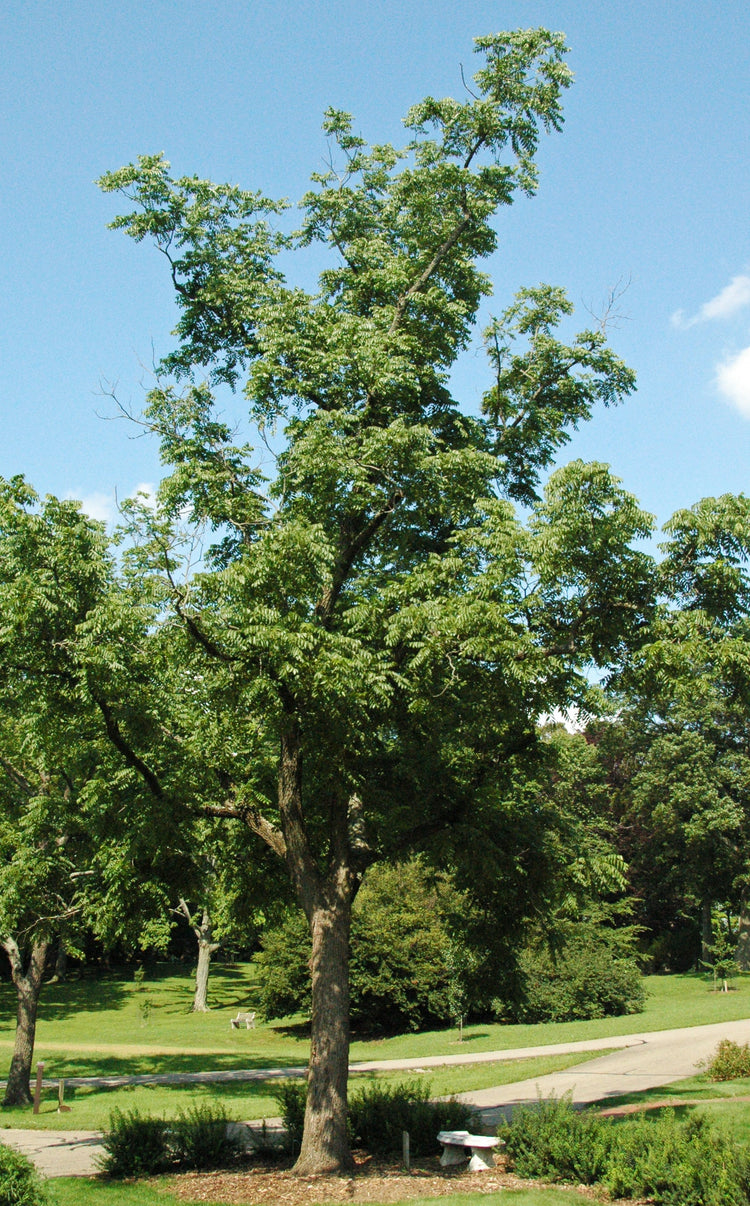Collection: Walnut
- Site Selection: - Soil: Black walnuts prefer deep, well-drained, fertile soils. They thrive in loamy or sandy soils with a pH of 6.0 to 7.5. - Sunlight: Choose a location that receives full sun, as black walnuts need plenty of light to grow well. - Space: Ensure enough space for the tree to grow, as they can reach heights of 50 to 75 feet with a spread of 50 to 75 feet.
- Planting Time: The best time to plant black walnut trees is in the fall or early spring when the trees are dormant.
- Planting Process: - Seedlings: Dig a hole twice as wide and as deep as the root ball. Place the tree in the hole, ensuring the root collar is ground-level. Backfill with soil and water thoroughly. - Seeds: If planting from seed, collect nuts in the fall, remove the husks, and plant them about 2 inches deep in the soil. Seeds should be stratified (exposed to cold temperatures) for better germination.
- Care for Black Walnut Trees
- Watering: - Young trees need regular watering, especially during dry spells. Mature trees are more drought-tolerant but benefit from occasional deep watering.
- Fertilization: If the soil is poor, Fertilize in early spring with a balanced fertilizer. Avoid over-fertilizing, as it can harm the tree.
- Pruning: - Prune in late winter to remove dead or diseased branches and to shape the tree. Avoid excessive pruning, as it can stress the tree.
- Pest and Disease Management: - Black walnut trees are susceptible to pests like walnut caterpillars and diseases such as anthracnose. Monitor the tree regularly and apply appropriate treatments if necessary.
- Juglone Toxicity: - Black walnut trees produce a chemical called juglone, which can be toxic to many plants. Be mindful of what you plant near black walnuts, as some plants may not thrive.

-

 Sold out
Sold outBlack Walnut Pack of 25
Regular price $60.00 USDRegular priceUnit price / per

